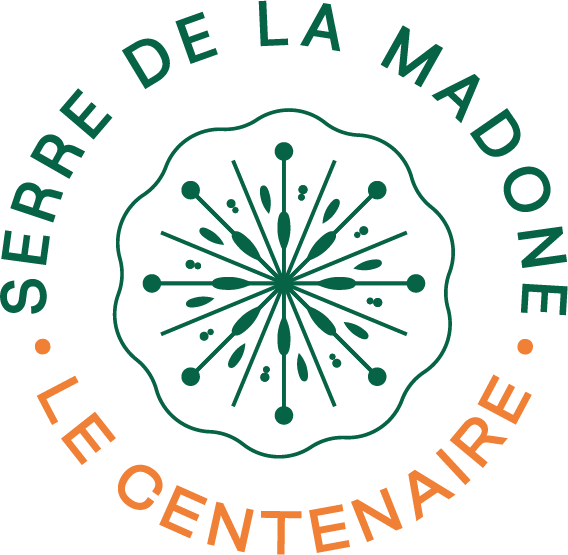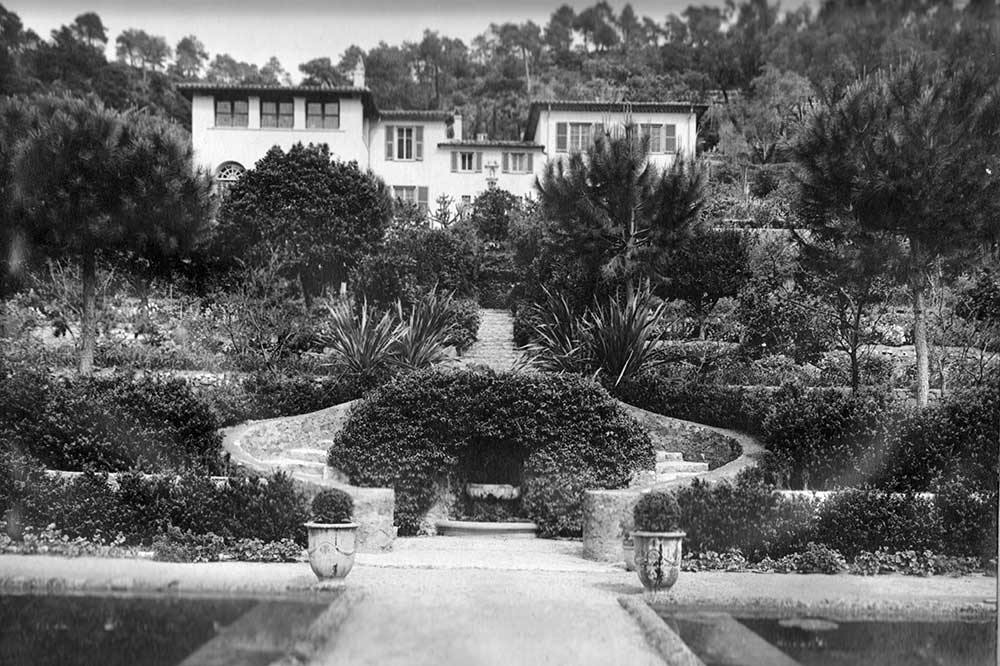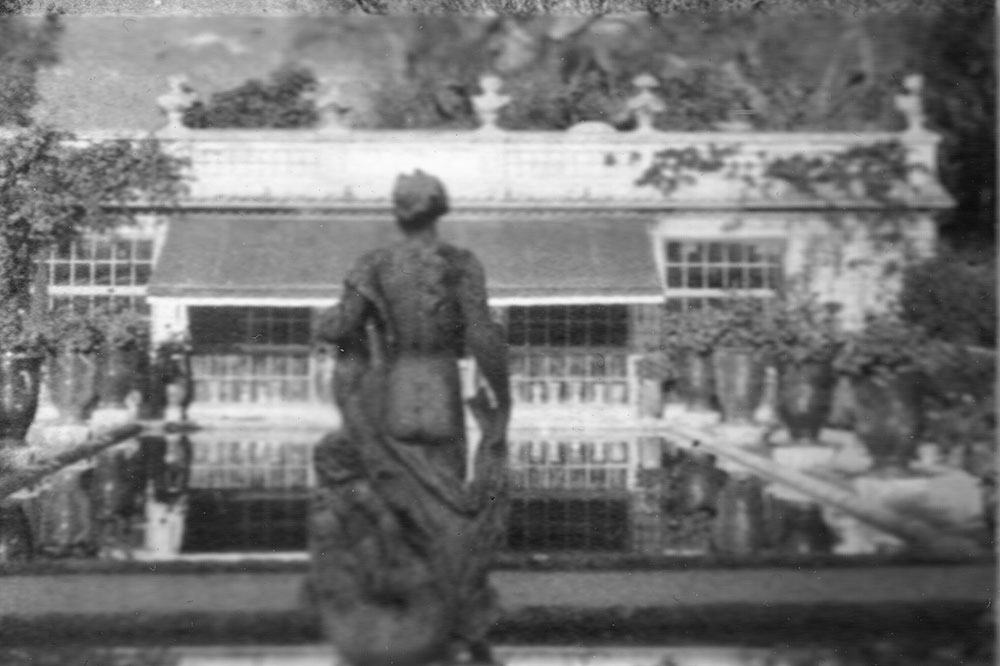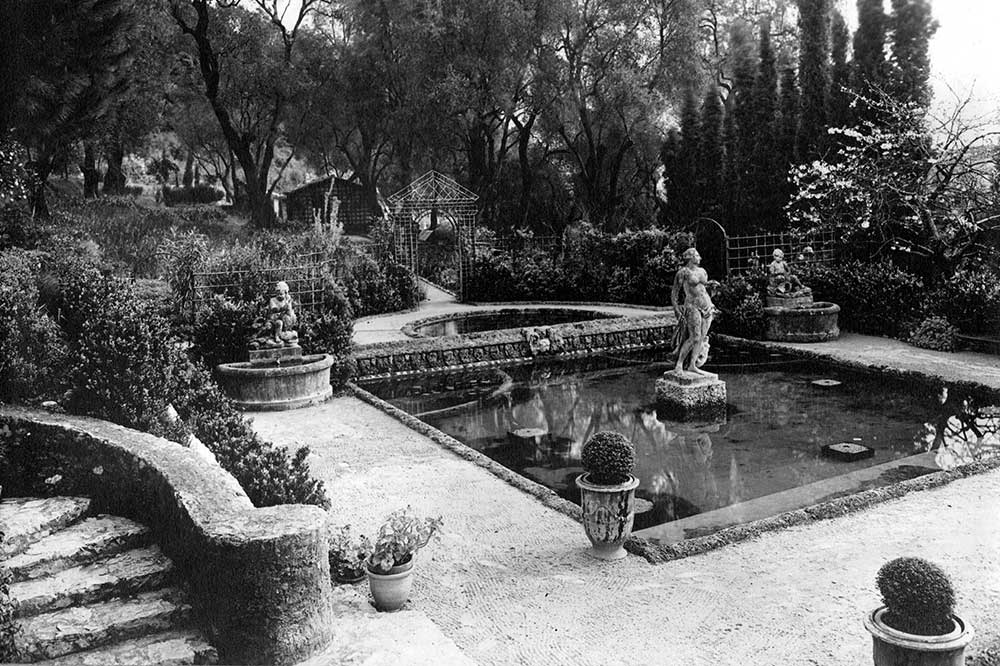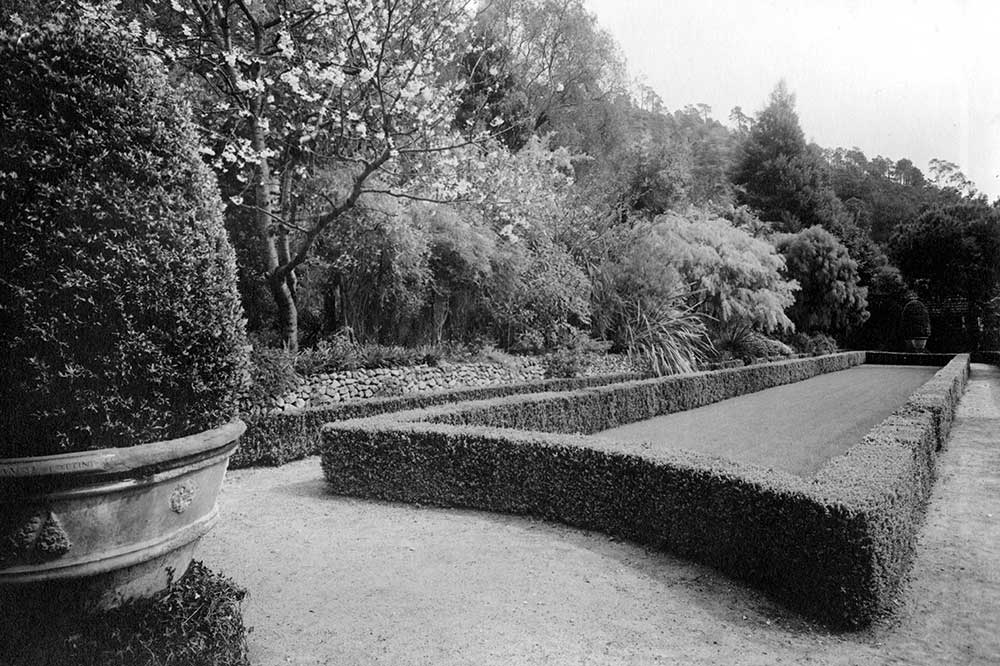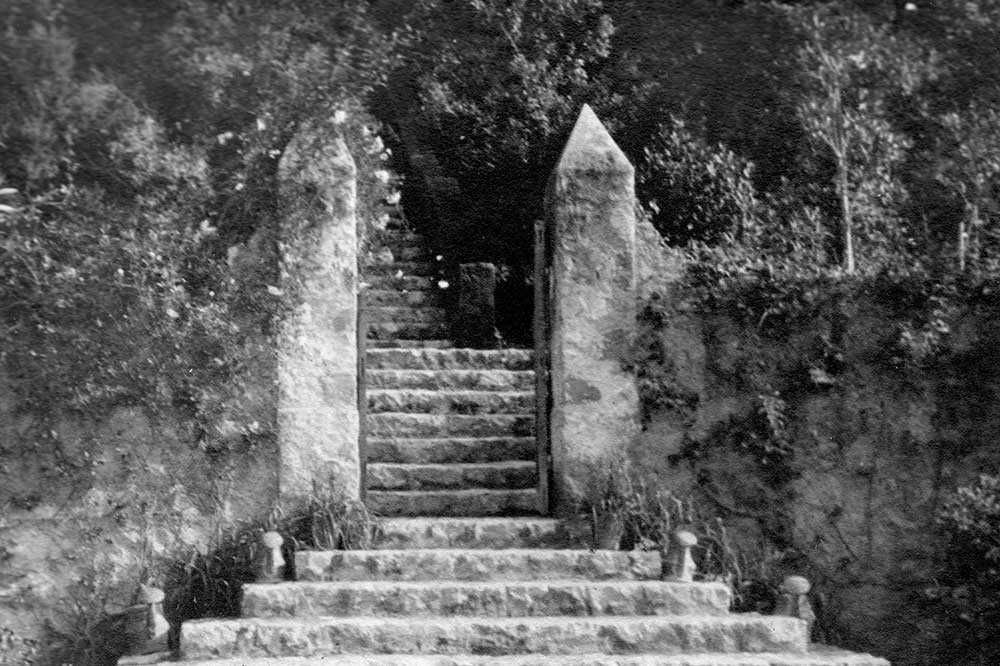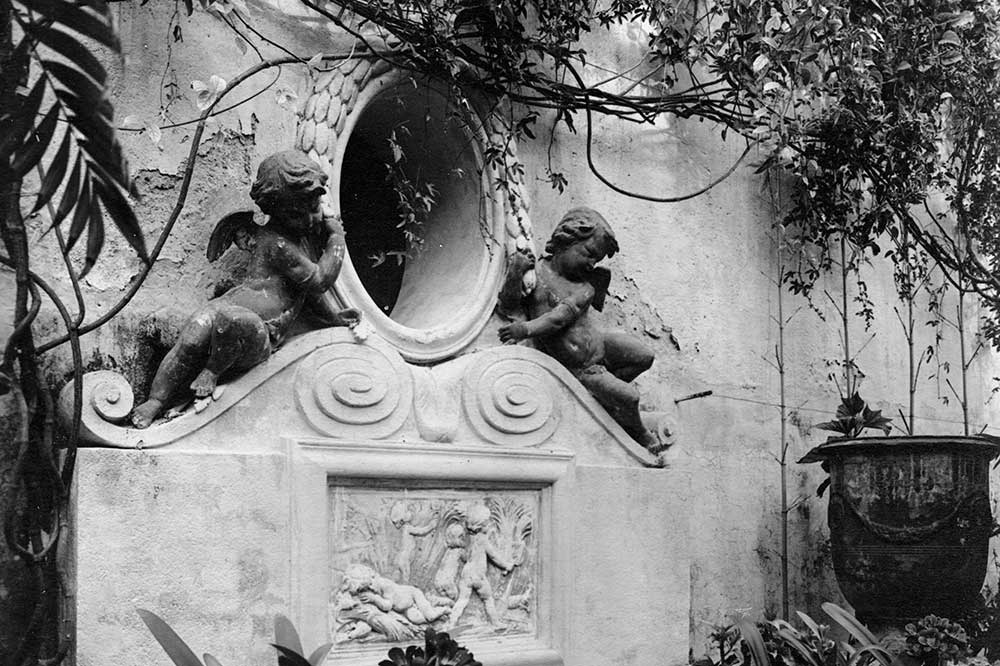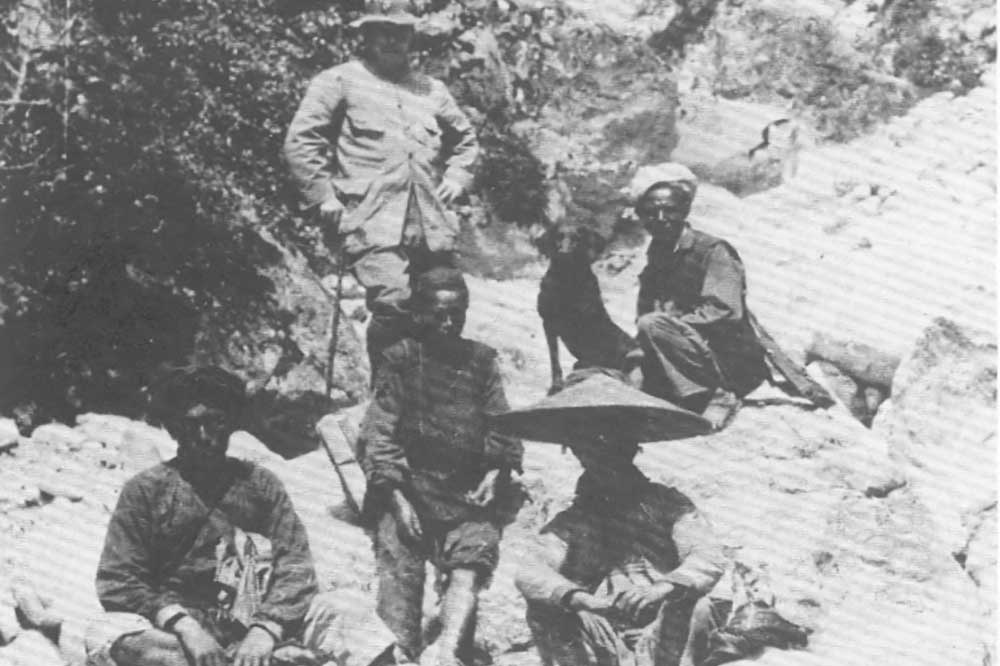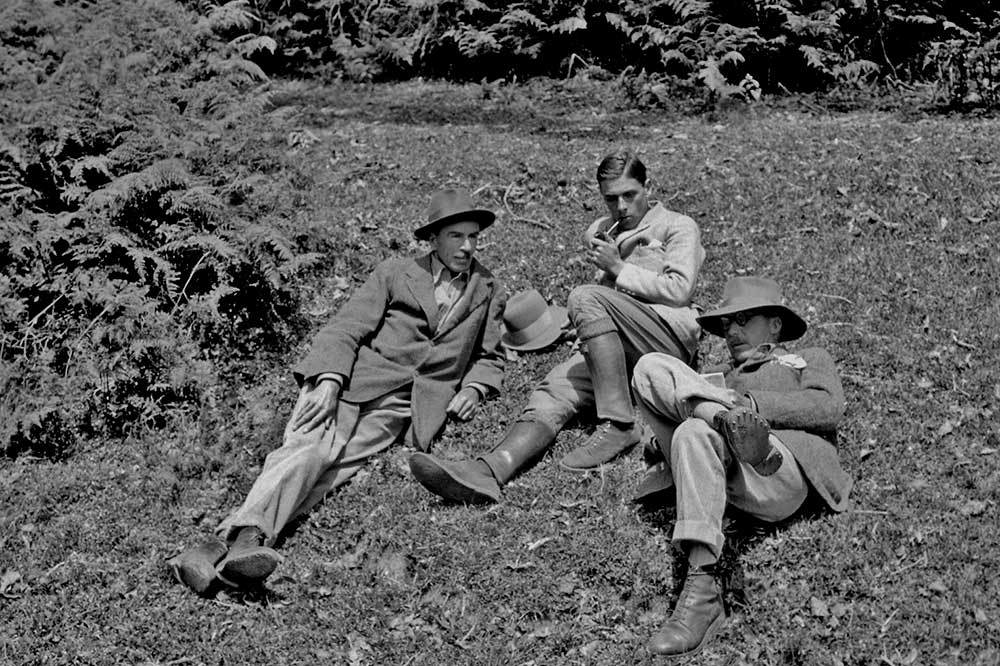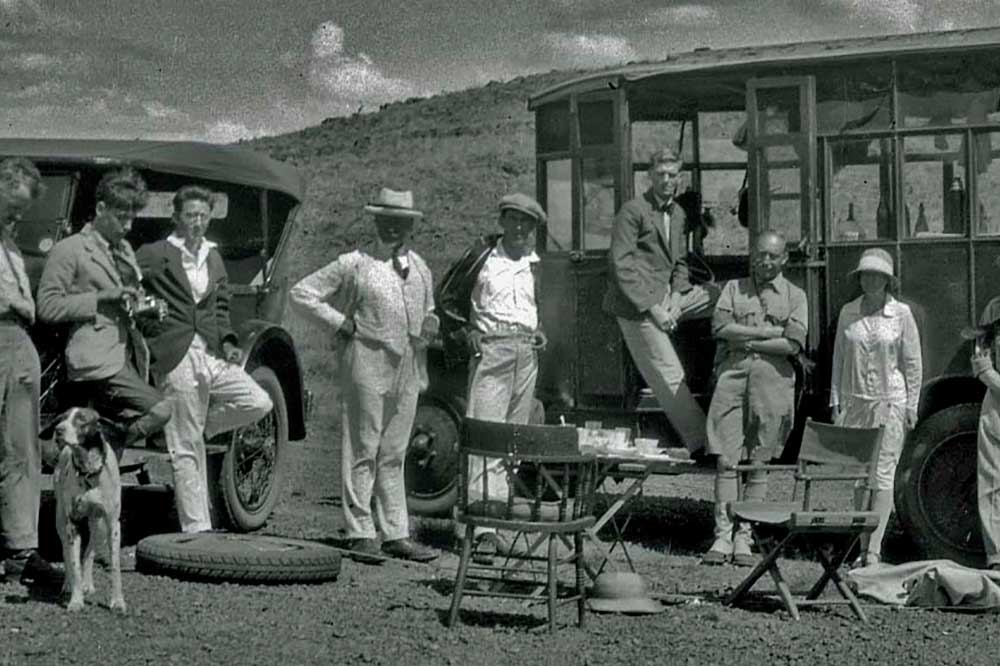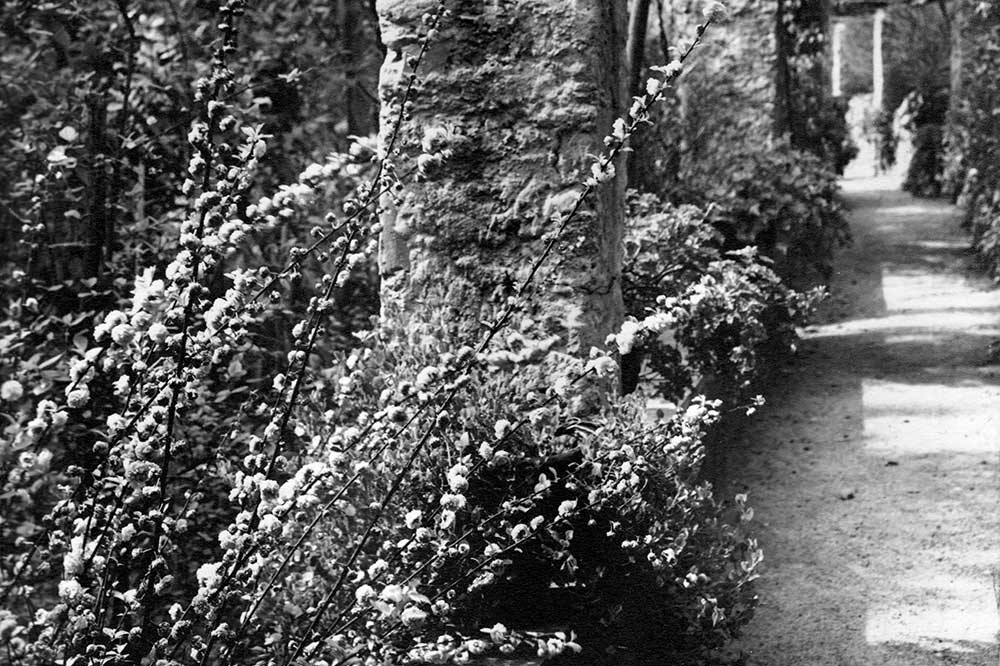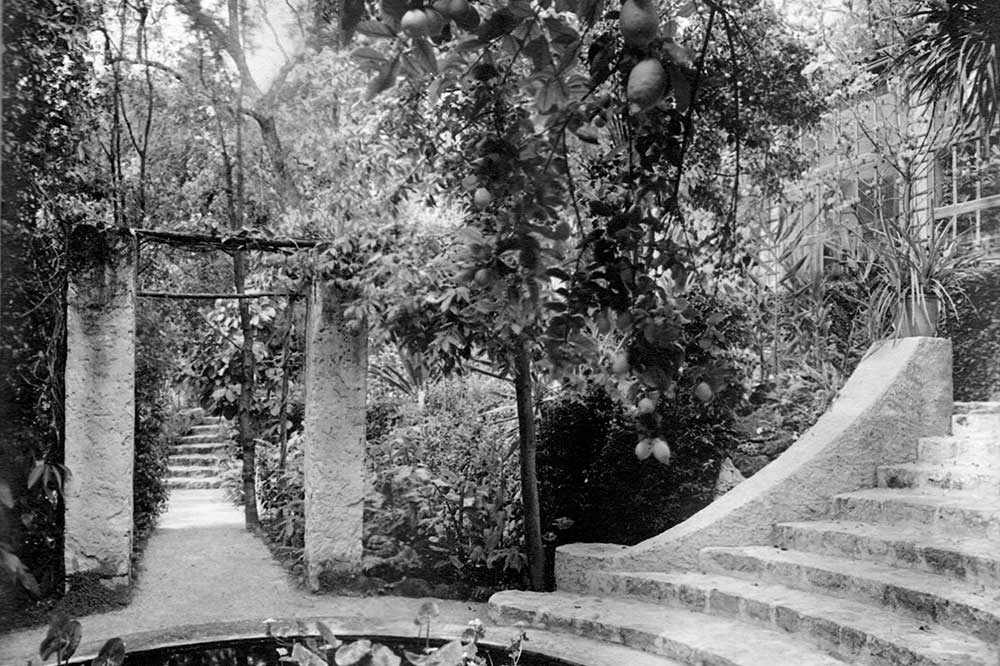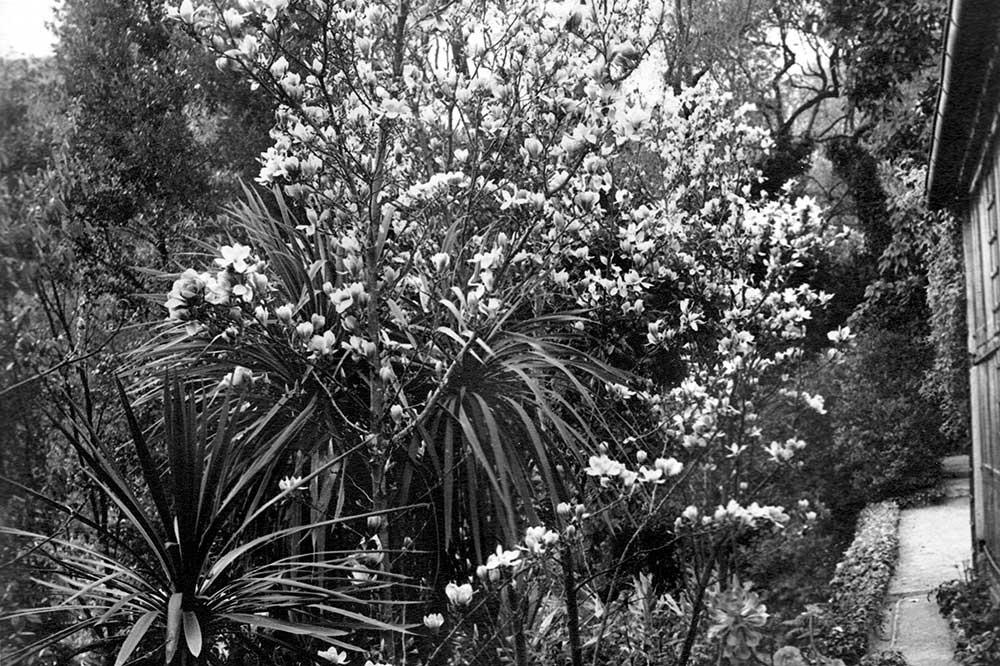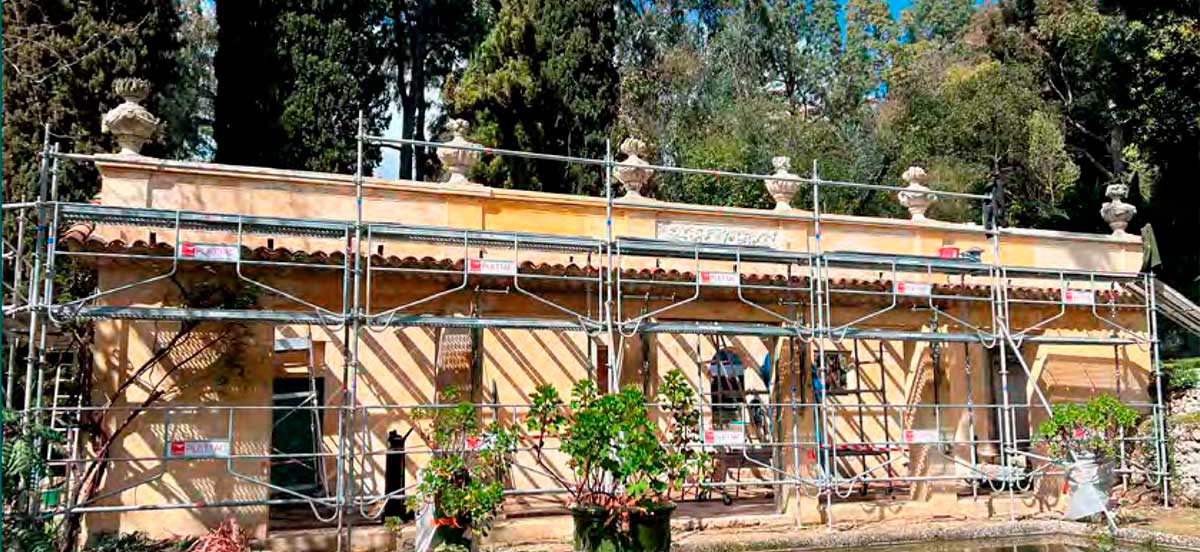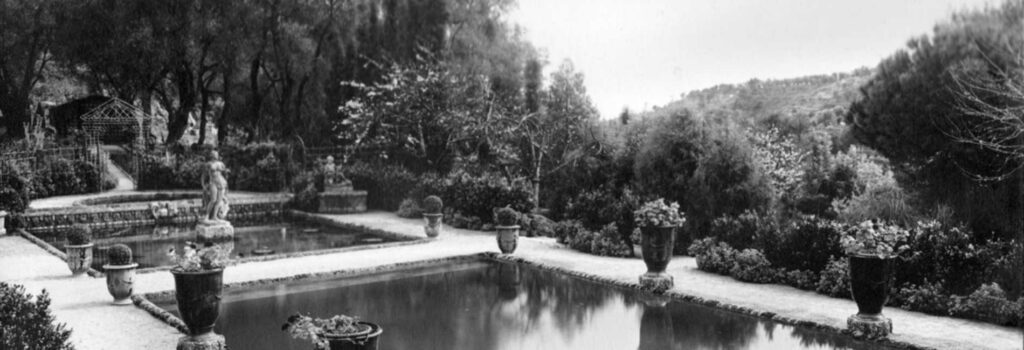
Histoire de la Serre de la Madone
Un chef-d’œuvre façonné en quinze années de travail
Blottie dans les collines de Menton, la Serre de la Madone fut créée entre 1924 et 1939 par Lawrence Waterbury Johnston (1871–1958), botaniste, explorateur et concepteur de jardins.
Né en 1871 au sein d’une famille américaine aisée, il obtient la nationalité britannique en 1900, avant de s’engager dans l’armée et de rejoindre les forces britanniques en Afrique du Sud lors de la guerre des Boers. C’est dans ce contexte, au contact direct d’une nature encore sauvage, qu’il découvre une fascination durable pour le monde végétal. De retour, il se plonge avec ardeur dans les ouvrages spécialisés, passant des heures à explorer les bibliothèques, dévorant traités botaniques et récits d’exploration.
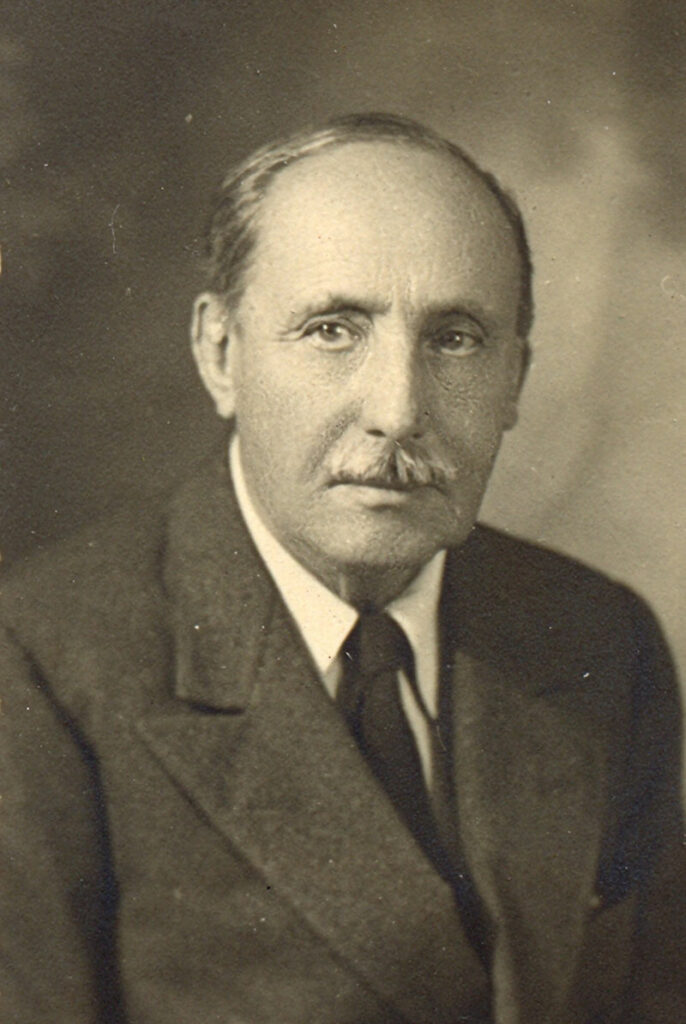
Johnston est surtout connu pour son chef-d’œuvre de Hidcote Manor, dans le Gloucestershire, en Angleterre — l’un des tout premiers exemples du style Arts and Crafts appliqué à l’art des jardins. Il acquiert la propriété en 1907 et consacre les dix-sept années suivantes à en révéler toute la richesse, jusqu’à en faire une référence mondiale. sur ce lien.
Mais un seul chef-d’œuvre ne suffit pas à cet homme animé par la recherche et l’expérimentation. Il part alors en quête d’un site propice à l’acclimatation de plantes tropicales et subtropicales. C’est à Menton que son regard se pose, séduit par la douceur exceptionnelle du climat et par un site encore vierge — un paysage de bois et de terres agricoles, jamais encore façonné par la main d’un jardinier.
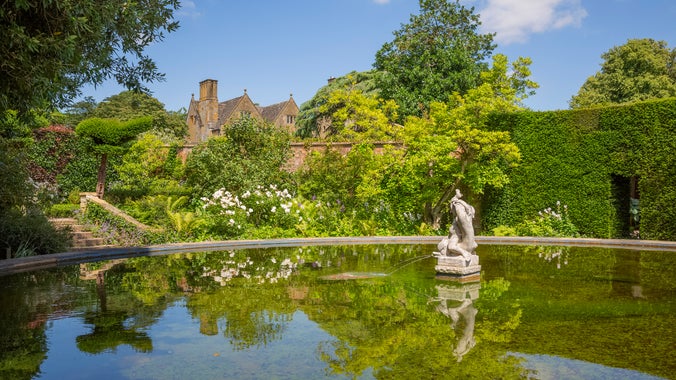
Entre 1924 et 1935, Johnston acquiert dix parcelles de terrain, certaines dotées de bâtisses et de dépendances, afin de constituer un domaine unifié occupant l’ensemble du versant.
Au fil des années, il transforme les anciennes terrasses agricoles et les oliveraies en un refuge botanique raffiné, pensé comme un lieu d’acclimatation pour des plantes rares et exotiques rapportées de ses expéditions à travers le monde. Son ambition : les présenter dans des espaces intimes, scénographiés, où l’art des jardins méditerranéens dialogue avec la luxuriance subtropicale.
Après sa disparition en 1958, le jardin change plusieurs fois de propriétaire et sombre peu à peu dans l’oubli. Il faudra attendre 1999 pour que le Conservatoire du Littoral en fasse l’acquisition. Depuis, avec le concours de la Ville de Menton et de l’Association pour la Sauvegarde des Jardins d’Exception du Mentonnais, un ambitieux programme de restauration a été lancé, avec pour objectif de retrouver l’esprit fondateur imaginé par Johnston.
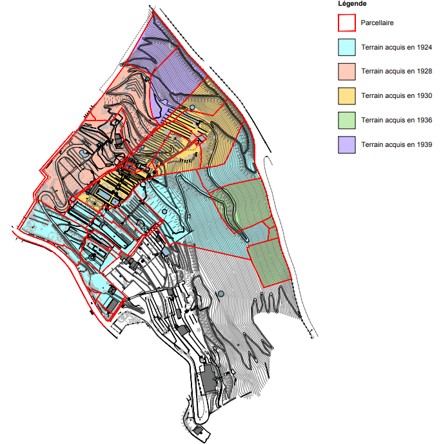
Des rares séquences de la Serre de la Madone des années 50.
La vision de Johnston associait rigueur botanique et sensibilité artistique. Inspiré par l’architecture des jardins italiens, il introduit des pergolas, escaliers, fontaines et terrasses, intégrant jeux d’eau et végétaux structurants pour composer un enchaînement harmonieux de « chambres de verdure », où chaque espace forme un monde en soi.
Chaque partie du jardin offrait une atmosphère distincte, une palette de couleurs propre, ou un spectacle saisonnier singulier. Grand voyageur, Johnston parcourut les montagnes du Drakensberg, les pentes du Kilimandjaro, les fynbos du Cap ou encore les forêts du Yunnan, ramenant de chacun de ses périples graines, boutures… et idées nouvelles. Ses carnets, ses lettres et ses journaux de voyage témoignent d’un souci méticuleux des conditions de sol, des altitudes et des rythmes de floraison.
